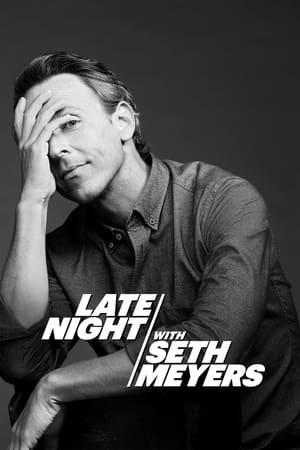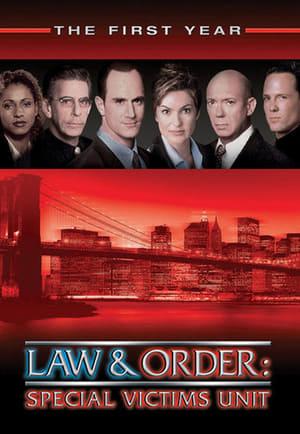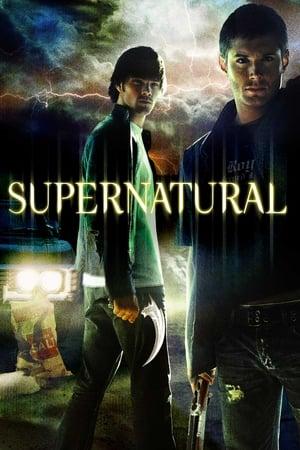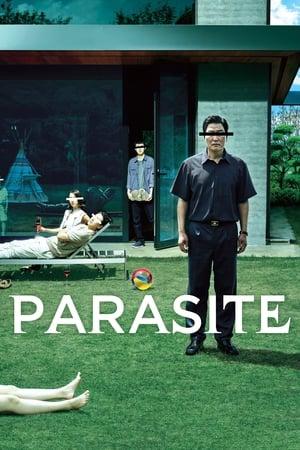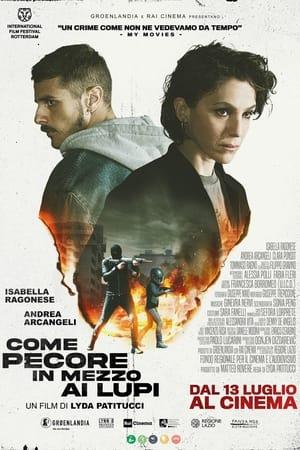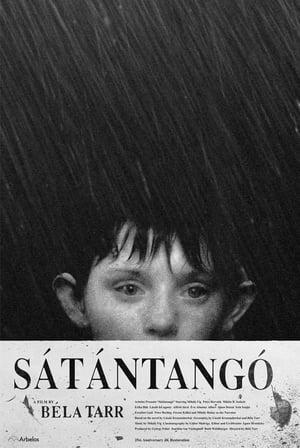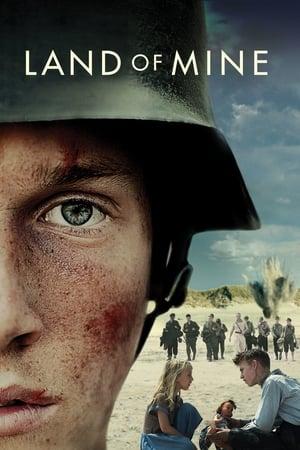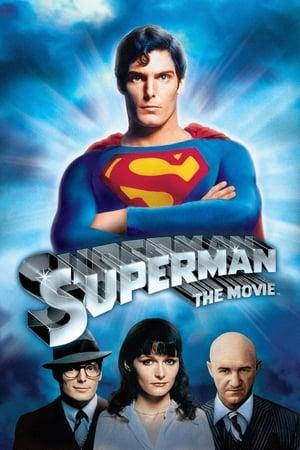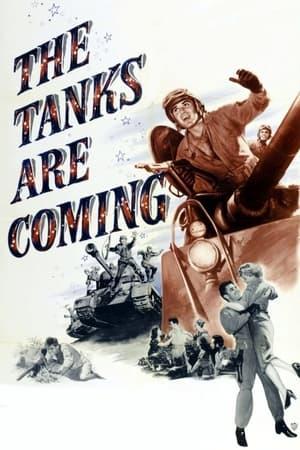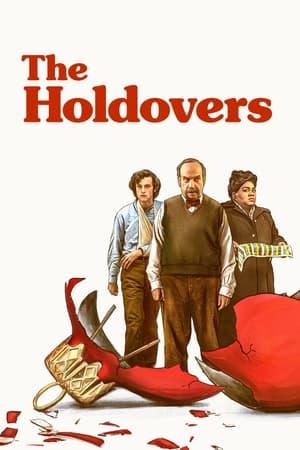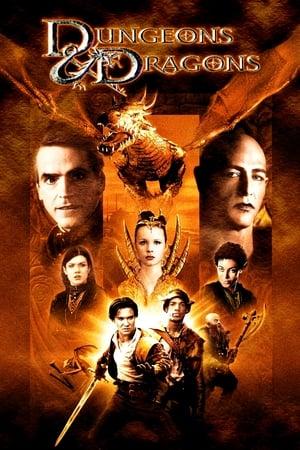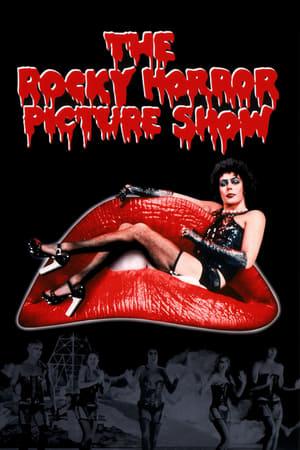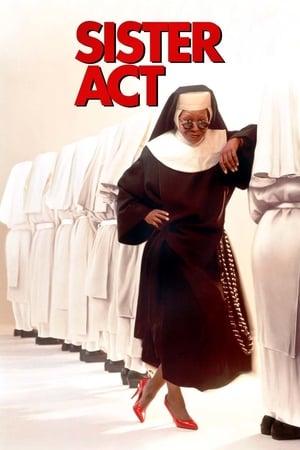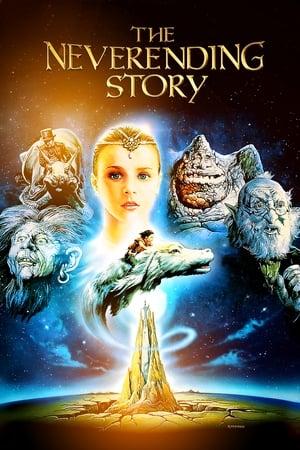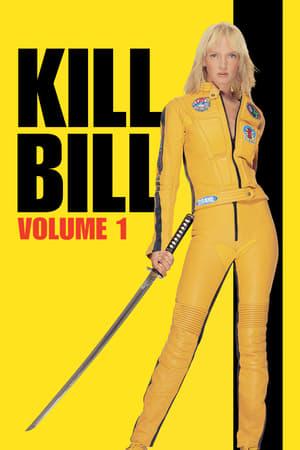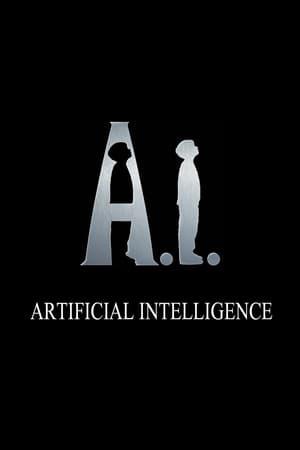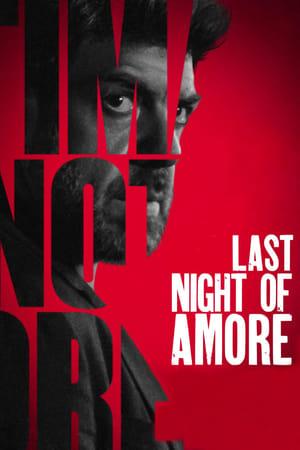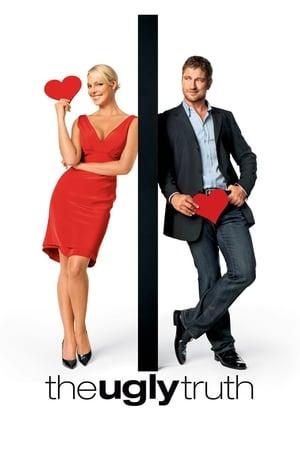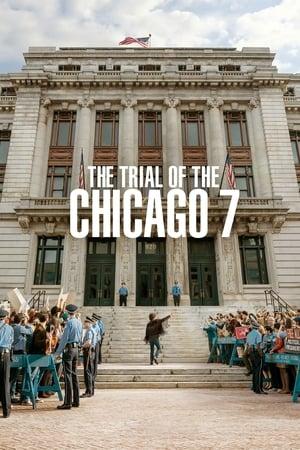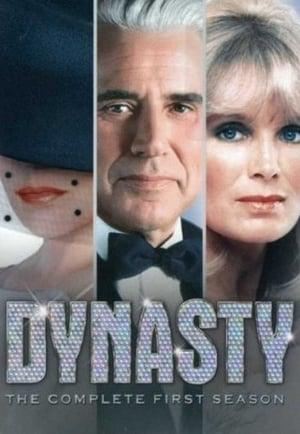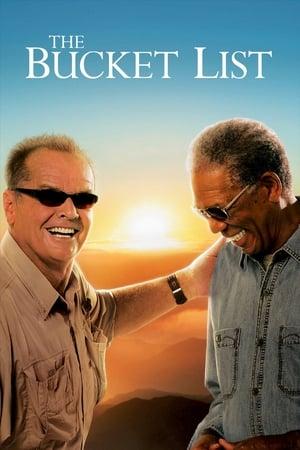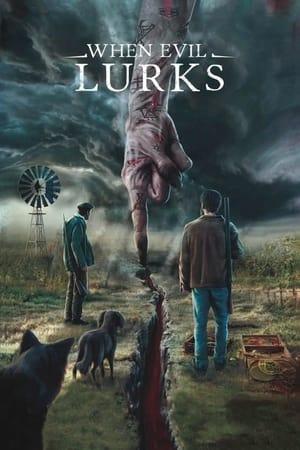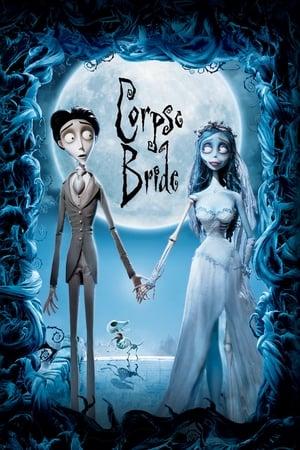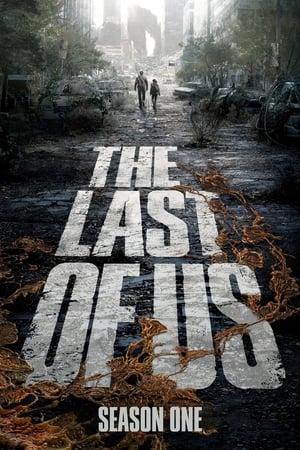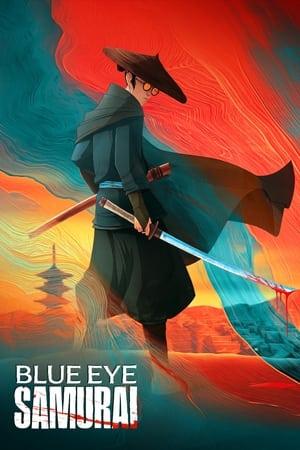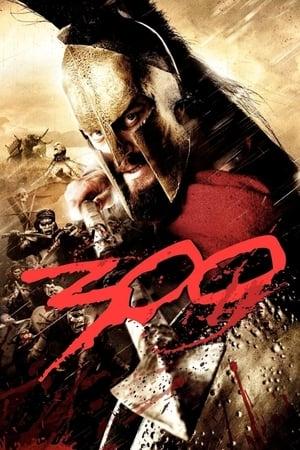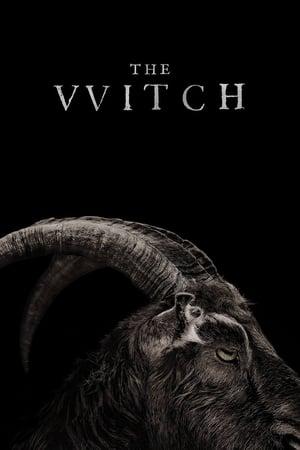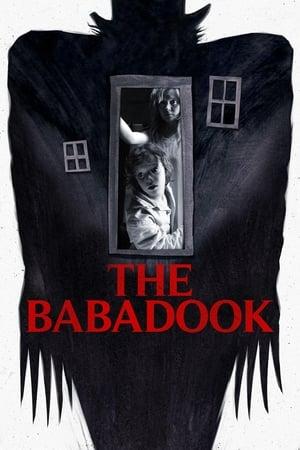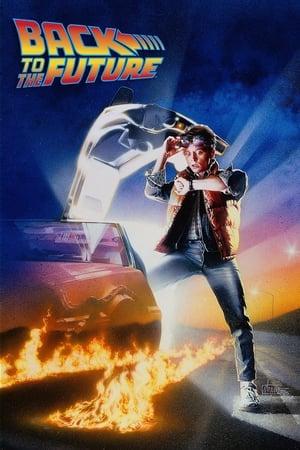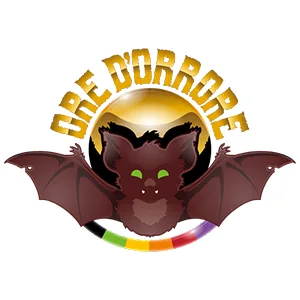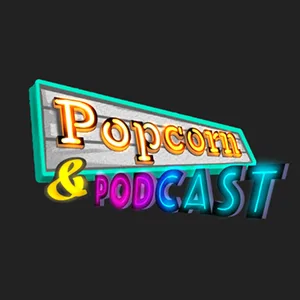Film lovers to Follow
Enter the community and follow the Film Lovers and their reviews, collections and blog articles
News Films and TV Series
Old and new films and TV series now streaming
Top 20 Films and TV Series
Most watched films and TV series in streaming: find out where, find out how much you can save
Other
Random reviews
Browse the community's reviews and write too!
 Ruben Maria Soriquez
Ruben Maria Soriquez
Parasite
(Film, 2019)Bong Joon Ho gives a wonderful lesson in filmmaking with this fantastic film with exceptional storytelling. A rare piece of skill. This film cannot be pigeonholed into a single genre because at the same time it is comedy, tragedy, crime, horror, social satire, which makes it, in fact, indefinable. A film that transcends linguistic barriers because it deals with universal social dynamics and trends such as class struggle, treated with intelligent and acute humor. Parasite: but who? The rich family or the poor one? A wise and irreverent direction, an impeccable production design, remarkable acting performances shape this film which is a masterpiece from any point of view you look at it.
 Claudia Geraci
Claudia Geraci
UFOs
(Serie TV, 2021)I can't find fault with this little gem from beyond the Alps, which plunges us into a 70s universe in the era of ESP and UFO sightings, but also of dungarees, "sharks" (the Citroën DS) and excessive consumption of cigarettes. Melvil Poupad is certainly also caricatured, but he even manages, so to speak, to walk and move like a man from the seventies! The series makes plenty of twists and shameless cliffhangers which then get lost in the game of plot, but the my advice is to equip yourself with pink cotton candy and get on the carousel. Good fun!
 Ros
Ros
Like Sheep Among Wolves
(Film, 2023)noir thriller debut feature. Not perfect: plot already seen. But there is hope for the future. Ragonese is good at getting into character. Score 6 and a half
 Alessandro Castrini
Alessandro Castrini
The Wolf of Wall Street
(Film, 2013)Screenplay 7.5/10 Direction 8/10 Actors 9/10 Photography 8+/10 Production design visual effects 7/10 Make-up, hairstyles, costumes 7/10 Sounds and soundtrack 7/10
 Cocca Farlocca
Cocca Farlocca
Poor Things
(Film, 2023)A brilliant idea that could have given life to a masterpiece. The result was a good film with an exceptional performance by Stone, one of my favorite actresses. I can say that female power and the influence women have on men - for better or for worse - is what comes out the most in this film. And I'm happy about that.
 Amalia
Amalia
Swallow
(Film, 2020)This movie surprisingly held my attention. Though I was apprehensive at first, I'm pleased I watched it. Swallow is a leisurely, fascinating, sometimes sickening story about a woman whose seemingly rich life turns into a bordering golden cage. Bennett uses performance rather than explanation to convey a complex and heartbreaking representation of inner suffering. It's difficult to watch at times since the main individual, who swallows objects that shouldn't be, truly does embody the term. Bennett's skill is showcased and psychological suffering is effectively explored, despite the unpleasantness. Those who prefer deep psychological issues could find the journey enjoyable, although it might not be for everyone.
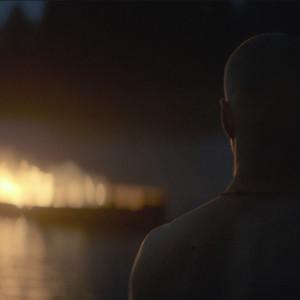 Funghettidraghetti
Funghettidraghetti
The Desired War
(Film, 2022)Unfortunately, especially for the cast that I really like, bad bad. From the first moments of the film I had the feeling that it was trying, without success, to imitate the great Italian arthouse classics: it's a shame that it totally lacks soul. The protagonist should be, I believe in the director's intentions, like an Antonioni character, but from being impotent he becomes useless; plot that is in the middle between classic plots and post-modern ones, but I must say especially with the ending it is tasteless. The direction becomes good in some scenes, such as that of the clandestine party, while I found the reference to Apocalipse Now in the sauna scene, which seemed obvious to me, to be grotesque. In short, a film that would like to be but isn't: it tries to be intellectual but it only has the form, not even very defined.
 Riccardo Paoli
Riccardo Paoli
The Last Bus
(Film, 2021)Appointment at Land's End by Gillies MacKinnon Appointment at Land's End is a film about love: about marital love, and about love for life. The exceptional protagonist takes on his own person, not only his years and serious ailments, but also all the spectators, and takes them with him on his wonderful journey. We start, rigorously on a bus, from John o'Groats to arrive at Land's End: practically the extreme tips of Great Britain. The journey is a way to pay homage to the memory of his wife and daughter, the latter who passed away prematurely, but also for himself, to get lost in the memories of times gone by. Very good, and also very British, Timothy Spall in the title role. The views are splendid: however, I cannot fail to mention the characteristic English buses (long live public transport). Perhaps the flaw of what is overall a good film are some overly sweetened scenes during the journey (the world, alas, is populated by uglier and more cynical people than those who appear as occasional traveling companions in the film). An extra point because the wife really liked it.
 Rael70
Rael70
The Loved Ones
(Film, 2009)Sean Byrne with his dazzling 2009 debut, "The Loved Ones", written and directed by the Australian director, wins the TIFF in Montreal and carves out a small place for himself in the horror universe of the fifth continent. A delightful film which, fortunately, does not deal with the American high school environment at all but goes straight to the heart of the story: a girl who is rejected by a boy for a school dance party. It would all seem normal but for Byrne normality doesn't exist and he manages to complete a strong, dynamic film with a lot of blood flowing from minute to minute. With an amazing Robin McLeavy who stands out above the rest of the cast, the viewer will have his money's worth and will certainly remain satisfied. See it and you won't regret it.
 Antonella
Antonella
Sexocracy: The man of Bunga Bunga
(Film, 2012)Extremely interesting documentary film from 2012, in which Lele Mora talks about himself and tells us about the sadly known worldwide Bunga Bunga. The winning idea is the overflowing narration of the entertainment agent which alternates with the simple and composed narration of a Filipino girl, creating a strong contrast of values and ideas. Archive scenes with auditions of aspiring starlets, who declare themselves willing to do anything to achieve success, alternate with living installations of women wrapped in cellophane, beautiful flesh artfully piled in a rubbish bin... irritating images that remain strongly imprinted, symbol of the commodification of the woman's body. Bad temporary weather...
Film Lovers Activities
Read the latest reviews of our Film Lovers and post them too!
Other 
Last reviews by Film(amo) Lovers
Read the latest reviews of our Film Lovers and post them too!
Other
Movie Collections
Collection of film and TV series titles chosen by our Film Lovers
Blog Articles
The latest articles from our bloggers, follow them on Filmamo!

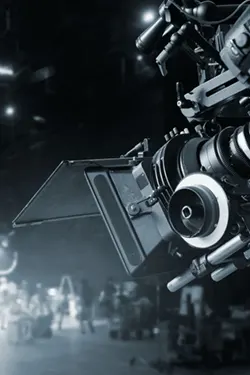
WHEN HORROR SPREADS LIKE A DISEASE: 5 HORRORS WHERE EVIL IS CONTAGIOUS
In horror cinema, one of the most disturbing and at the same time fascinating themes is certainly that of evil that spreads like an epidemic and which, instead of being confined to a specific place or person, is transmitted from one individual to another. another, unleashing a cycle of never-ending horror. This dynamic turns out to be particularly disturbing, especially because it recalls the concept of contagion: an invisible evil that can affect anyone, without any warning or motivation. Exactly like a virus, in fact, terror creeps into the lives of the protagonists, leaving the viewer with an uncomfortable sense of bewilderment.
In this article we will explore five horror films in which evil spreads like a disease, fueling fear and amplifying the tension of the narrative.
<8 >1) It Follows (2014)Directed by David Robert Mitchell, It Follows quickly gained a prominent place among modern horror cults thanks to its original and distressing premises. The film follows Jay (Maika Monroe), a young girl who, after a sexual encounter, discovers that she is being haunted by a mysterious entity. This being turns out to be able to continuously change shape, taking on the appearance of anyone and chasing the victim until he kills him, unless he manages to transmit the curse to someone else through sexual intercourse.
L he idea that evil transfers from one person to another, just like a sexually transmitted disease, is what makes the atmosphere of the film so incredibly suffocating, but not only that. In fact, what makes It Follows such an effective product is the constant feeling of threat, accompanied by a subtly inserted social commentary on issues such as sexuality, guilt and the consequences of one's actions. To complete the picture, a minimalist but evocative direction and the hypnotic soundtrack of Disasterpeace.
2) The house - The awakening of evil (2023)<11 >
This chapter of the La Casa saga, dated 2023 and directed by Lee Cronin, brings the classic franchise back to life with a contemporary and, if possible, even scarier version. The House - Evil Awakens tells the story of Ellie (Alyssa Sutherland), a single mother who lives with her three children - teenagers Danny and Bridget and little Kassie - after being abandoned by her husband . When one evening the boys discover an ancient manuscript and three vinyl records in a hole in the floor of the building's garage, the evil begins to spread rapidly, first possessing Ellie and then attacking anyone who comes into contact with her.
Here the contagion is demonic, a malevolent spirit that spreads like a virus, taking over bodies and destroying the will of its hosts. Cronin's vision fuses body horror with the theme of possession, taking up the classic elements of the saga (such as the Necronomicon and the brutal violence) but acquiring a fresh and modern touch that leads to a continuous crescendo of horror.
<0 >3) The Ring (2002)
American adaptation of the Japanese film Ringu of the same name, directed by Gore Verbinski, The Ring is probably one of the most famous horror films that exploits the concept of contagious horror. The film revolves around the journalist Rachel (Naomi Watts), who begins to investigate after the inexplicable death of her niece, discovering that evil spreads through the viewing of a cursed videotape: anyone who watches it, in fact, he is destined to die after seven days.
What makes The Ring particularly disturbing is its portrayal of contagion as a curse that spreads through technology, a theme that remains relevant in an age where information spreads virally through the media . Furthermore, the entity behind the curse, Samara, represents the embodiment of a trauma that expands without limits, destroying anyone who crosses its path and making the atmosphere even more dark and distressing.
4) Final Destination (2000)
Final Destination, directed by James Wong, offers a unique variation on theme of the contagion of evil. In this case, evil is not represented by a physical or supernatural presence, but by destiny, which can sometimes be more malevolent than a demon itself. When the protagonist Alex (Devon Sawa) has a premonition about a plane crash, managing to save some of his classmates, Death is not willing to let them escape: one after the other, in fact , survivors begin to die in increasingly bizarre and macabre circumstances.
In Final Destination, the contagion of evil manifests itself as a sequence of unstoppable events, as if Death were an entity that does not accept having been deceived. The film mixes elements of a supernatural thriller with a series of "chain" deaths, offering a disturbing reflection on our helplessness in the face of the inevitable.
5) Drag Me to Hell (2009)
In Drag Me to Hell, director Sam Raimi tells the story of Christine (Alison Lohman), a bank employee who, after having denied a mortgage extension to an elderly lady, is cursed by the latter: in the grip of anger at the humiliation suffered, the woman steals a button from her coat, using it to unleash a powerful curse on her. From that moment, in fact, the protagonist is tormented by terrifying visions and persecuted by Lamia, an evil demon, who does everything to terrorize her and drag her to hell.
The curse, thus, spreads through simple contact, becoming a true supernatural contagion. In Drag Me to Hell, the director perfectly balances tension and grotesqueness, creating surreal situations that entertain and scare at the same time.
edited by Sofia Biagini of CinemaSerietv.IT< 10> for Filmamo


"LAUGHTER, LOVE AND FRIENDSHIP: LET'S REDISCOVER 'MY BEST FRIEND'S WEDDING'"
Dear readers, welcome and welcome back to the new appointment with the "Hearts on the screen" column. We meet again after the summer break, to continue our journey into the world of Rom Coms, which always make us smile and make our hearts warm even a little, it never hurts...
< 1>Today I want to talk to you about a film that we all know, which I recently happened to watch again and which I think deserves the right amount of attention, as I believe it has a perfect mix of romance and moments of pure hilarity, I'm talking about "< 6>My Best Friend's Wedding”.
"My best Friend's Wedding" is a film that manages to capture the heart but does with irony, thanks to the wonderful performances of Julia Roberts, who in those years was considered the Queen of Rom Coms, an almost debutant, but already promising, Cameron Diaz, the always excellent Dermot Mulroney and, as the good ones would say, last but not least of all, Rupert Everett, who undoubtedly shared the scepter with Roberts in this film, although he is not a constant presence but is certainly the one who holds the funniest and most memorable scenes of the film.
The story revolves around Julianne Potter, played with grace by Julia Roberts, a young food critic who realizes she is in love with her best friend, Michael, just when he announces the his impending marriage to another woman, Kimmy, played by Cameron Diaz. Julianne, shouting "This wedding shouldn't happen" decides to do everything to prevent and sabotage the wedding.
Let's face it, the premise of the film certainly doesn't scream "originality" but the film is so well acted and structured that you can easily ignore it. The film manages to perfectly capture the essence of the complications of love and friendship, intertwining moments of hilarious comedy with moments of pure vulnerability. The dynamic between Julianne and the other characters, such as Diaz's feisty Kimmy and Everett's sarcastic George, who also tries to be Roberts' "voice of reason", offers a series of memorable lines and hilarious situations that will be remembered forever. long even after the credits.
The nostalgia for true loves and the relationships that have marked us is a central theme. In an era like the current one, in which technology has changed the way we connect, rewatching a 1997 film manages to make us reflect on how precious authentic human bonds are, be it love or a true and profound friendship. and how today we forget too easily to celebrate these relationships, when we are lucky enough to have them.
But now we come to the moment I prefer most, which is to reveal some curiosities from behind the scenes of the film, for example, did you know that Initially, the role of Julianne Potter was offered to Sarah Jessica Parker? Or that Julia Roberts initially turned down the role? Well, I'll tell you this and much more in: The 10 curiosities that perhaps you don't know about “My Best Friend's Wedding” :
1) Parker, who was the first choice for the role of the protagonist, had to refuse due to her commitments with the iconic series “ Sex & The City”. When Roberts was given the role, she didn't immediately accept. The reason? The character, in a first draft, did not undergo personal growth. After some changes, Julia accepted the role, once again consecrating herself as the queen of romantic comedies.
< 2>
2) The wonderful scene where the cast sings I say a little prayer in a restaurant was improvised during filming, without any script. The director, P.J. Hogan in fact preferred to let the actors interact in a natural way. A perfect choice, considering that that scene later became one of the most iconic.
3) Rupert Everett, who lent the face to George Downes, initially only had a handful of lines. In an interview Everett said: “When I got the offer, I literally only had two lines in the whole movie. So I wasn't well disposed. I was wondering: what's the point?” the actor said. Then he and the director worked on the character, making it much more impactful.
Everett received much praise for his performance. His performance helped make the character of George an icon of the LGBTQ+ community in mainstream cinema of the 1990s.
4) Initially, the character of Kimberly was not intended for Cameron Diaz. Insiders were thinking of giving it to Drew Barrymore. The choice then fell on Diaz thanks to Julia Roberts, who decided to propose her.
5) In 2019, 22 years after the release of the film, the cast of “My Best Friend's Wedding” organized a reunion. An event that gave fans a little gem about the ending of the film: initially, in fact, Julianne would have had her happy ending by meeting and falling in love with one of the guests (played by John Corbett), a scene later replaced with the one in which Julia Roberts and Rupert Everett dance together. As explained by Hogan, the director: “Viewers didn't want Julianne to have a happy ending. They hadn't forgiven her yet. They weren't ready to see her in the arms of another.”
6) One of the most memorable and, perhaps, most important scenes of the film is when the character by Cameron Diaz, Kimmy, is dragged into the spotlight to perform at a karaoke bar. Suffice it to say, karaoke is the last thing he wants to do. It's one of the first times Julianne tries to get Kimmy into trouble, but Kimmy still manages to escape unscathed. But if his terror seemed real, it's because it really was! The actress was really scared to sing in front of so many people, even if she had to do it badly. Diaz said: “I was terrified of doing that scene, really. I let the real terror of singing in front of people come to life inside me.”
7) In 2015 it was revealed that ABC was developing a television version of "My Best Friend's Wedding", which would It was a continuation of the story and not a reboot. Unfortunately, there have been no significant developments since the announcement and we can only assume that, like many other projects, this one too has stalled, probably without ever seeing the light. There was also talk of a possible sequel in which Julianne would try to sabotage George's wedding; we have a feeling it would be a very welcome addition to the franchise!
8) In an interview with the Huffington Post given years after the film was made, Actor Dermot Mulroney, who plays Michael in the film, has revealed why he thinks the film continues to stand out despite so many romantic comedies having been released since then. He says the secret lies in the fact that the plot is not centered on a happy ending between the two romantic leads, but is rather a kind of farce, in which the audience witnesses Julianne fail spectacularly in her attempt to sabotage this marriage . Creators of modern romantic comedies, take note!
9) When "My Best Friend's Wedding" was being filmed, Julia Roberts was already a great movie star, so it's no surprise that it was tricky for her to shoot outdoor scenes in Chicago without being mobbed by fans. A fun example is the scene on the ferry, where it seems like something is finally about to happen between Julianne and Michael. The boat they are on continues to pass under the bridge, but during filming they had to deal with fans screaming Julia's name, interrupting the scene every time.
10) If we asked fans if Michael and Kimmy's marriage would be long-term, we'd probably get mixed answers. Kimmy, after all, was barely out of her teens when the two got married, and it's not like they exactly had much in common. But, pessimism about divorce rates aside, cast members largely believe these two would still be happily married! In a 2019 interview with Entertainment Weekly, Dermot Mulroney said: "He supports the whole theory that she's the right girl for him, and he's the right guy for her, right?".
It would be really reductive to define this film as just a romantic comedy. It is a journey into the labyrinths of the heart, where laughter and feelings are inextricably intertwined. It is a film that invites us to reflect on love, friendship and the importance of having the courage to express our feelings. If my homage to the film has aroused in you the desire to see it again, you can find “My Best Friend's Wedding” on Netflix and on Amazon Prime for rent at €3.99. See you next time, my dear readers, and may life continue to be a sweet comedy, full of romantic surprises!
< 3>

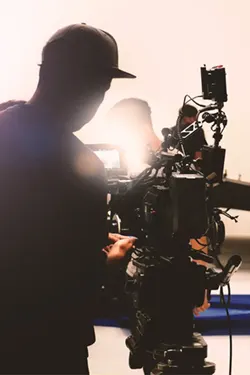
VIEWS FROM THE WORLD: PAOLO SORRENTINO
He is the most loved Italian director in the United States, often considered Fellini's only successor for his personal style and his ability to narrate and insert unusual characters into his films.
He made his feature film debut in 2001 with The Man More, his first work set in his native Naples. Already from this film we can see some traits of what will be his poetics: about all the love for losers. The two protagonists are in fact men who lose their fame and money from one moment to the next. Despite the same name, but a profoundly different character, fate still leads them to hopeless social futility.
The second film already entered the competition at Cannes. The consequences of love gets excellent reviews and establishes Sorrentino as an author to keep an eye on. Again with his partner Toni Servillo, he tells the story of a man who lives isolated in a hotel in the Canton of Ticino practicing without human contact. Dry direction, subtractive acting and the fundamental importance of the setting are other characteristics that stand out in his style.
With The Family Friend, the second time in competition at Cannes, comes the first stop. The story of an ugly loan shark who shows up at the victims' house as a family friend struggles, despite being yet another outcast protagonist in the world. Ugly is everywhere in society and the once again aseptic setting of the Agro Pontino accentuates the cruel mediocrity of life. Decidedly snubbed at the time, it still remains a work to be rediscovered.
With Il divo comes the Jury Prize at Cannes and the attention of the United States where the film arrives at the Oscars with a nomination for best make-up. For the first time Sorrentino dresses up as a scourge of the powerful and makes a work about Giulio Andreotti and his heavy presence in Italian politics in the nineties between the attempt to be elected President of the Republic and the mafia. The style becomes more frenetic and right from the opening credits the work appears more adrenaline-filled. There is no shortage of sharp jokes and aphorisms that blend well with the dry direction. It is certainly his most successful work even if not the most easily accessible.
The American sirens lead him to shoot his first film in English: This must be the place, which stars Sean Penn. The now out of touch rock star, who must settle the accounts of his dying father's past, is less original than previous works and marks a slowdown in his rise, but allows him to solidify his international fame. Yet another competition in Cannes is nevertheless a good response at the box office.
In 2013 he pulled the ace out of his sleeve and entered the competition at Cannes The Great Beauty. Wandering in a decadent Rome by Jep Gambardella leaves the festival empty-handed. The takings in Italy are good, but the criticism is not unanimous. However, their consecration came from overseas where they fell in love with the film that took home the Oscar for Best Foreign Language Film. The style becomes more rarefied, the direction increasingly attentive to the madness of life and the increasingly inconsistent circus of modern existence. A protagonist and many supporting actors accompany you on a journey to the eternal city that hypnotizes and overturns. Probably not the best, but the most recognizable.
With the following Youth, again in English and with two protagonists of world caliber such as Michael Caine and Harvey Keitel, returns to Cannes. The style becomes increasingly rarefied, the cold settings recall The Consequences of Love. Between reflections on love and death in an environment reminiscent of Mann's The Magic Mountain, the film heads straight for a touching, engaging and stylistically impeccable final scene.
A short break from cinema follows with the series The young Pope, which marks a new record by becoming the first Italian-produced series to be nominated for a Golden Globe and an Emmy. The power struggles in the Vatican fascinate Monfo and a few years later he produced a second season entitled The new Pope.
2018 is the year of Loro the film released in two parts which tells the story of Silvio Berlusconi. Sorrento does not once again become the scourge of the powerful, but he does not give up talking about the loneliness that scene after scene comes to grip the fallen leader. The film intrigued Italy and caused a lot of talk even though it proved difficult for the general public both due to its duration and style.
Penultimate effort It was the hand of God saw him in competition in Venice where he won the Grand Jury Prize. It is his most personal work, a sort of Amarcord in Neapolitan style which also enchants the world thanks to its distribution on the platform. It is his most sentimental work with the story of his parents and that of his cinematic father. He does not give up the follies of Naples and so the Sorrento opera is ready.
In Cannes this spring and ready for theaters is the turn of Parthenope, a new film set in Naples which talks about youth, its cheekiness and indecision, freedom and social constraints. Visually intriguing, but more glossy than usual, it marks a step back compared to his previous works and his love letters to Naples limps a bit.
Eclectic, visionary, inventive, loved by festivals and especially overseas Sorrentino is the greatest export product of Italian cinema. Capable of attracting attention to his films, he is certainly an all-round coherent author even at the cost of making a few slips. For a cinephile, when one of his films comes out, it's always time to go to the theater.

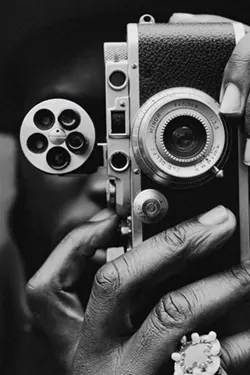
BEST BUDDY MOVIES
Stories of traveling companions united by the strangest circumstances and transformed into inseparable allies: the buddy movies have written the history of cinema since their origins - in the 1920s with Laurel and Hardy - thanks to their unique mix of entertainment and emotion. Particularly oriented towards comedy and action, it is a type of story which, beyond the characteristics of its protagonists, is essentially based on the encounter between two ways of being as distant as they are, in the end, complementary. Most of the time, we're more interested in whether they end up understanding each other before resolving the conflicts they find themselves in. Because in buddy movies friendship is more important than mystery, the final embrace more than plot twists, mutual understanding more than doubts. Let's find out together which are the best buddy movies to watch in streaming, on the occasion of the release on Apple TV+ of the latest proposal of the genre: Wolfs, with George Clooney and Brad Pitt as protagonists.
Superbad (2007)
Beyond narrative and aesthetic considerations, the key to every buddy movie is managing to transform the friendship in another protagonist: this is exactly what Superbad does. The quintessential "coming of age" film, it follows two best friends about to enter college, Evan and Seth, who will spend one of their last nights as high school students in total chaos. Directed by Judd Apatow, known for hits such as 40 Year Old Virgin and Knocked Up, the film boasts a hilarious supporting cast - among which stands out a very young Emma Stone - and a trio of unforgettable protagonists: Jonah Hill, Michael Cera and Christopher Mintz-Plass, definitely the strength of the entire narrative. Rarely has the friendship between some guys who make their aura of losers the best excuse to be special been described with such success, grace, wit and delicacy as in this little gem.
< 29>Hot Fuzz (2007)
Another unforgettable buddy duo, Simon Pegg and Nick Frost gave sparks in Edgar Wright's Cornetto Trilogy, reaching very high peaks with Hot Fuzz. In the 2007 film, they play police officers Nicholas Angel and Danny Butterman, an unlikely couple who must investigate a dangerous mystery in a small English town. While any attempt at the Pegg/Frost pairing deserves praise, Hot Fuzz is considered by many fans to be their best adventure yet, thanks to their hilarious chemistry that fuels a brotherly relationship that still moves us today. The premise itself is laughable: Pegg gives life to a London super-cop, one of those who shoot with both hands and jump on the bonnets of moving cars, sent to a small village in the English countryside that is not as peaceful as it seems. Of great referential refinement, it is a hilarious film, which never resorts to easy or crude jokes. Thanks to an agile humour, Wright manages to create a film in which the English laugh at everything and everyone, and at themselves first, which stands out above all for its ability to analyze the defects of a nation through its funny but irresistible protagonists.
Thelma & Louise (1991)
Among the first films of director Ridley Scott, this road trip all-female, star-studded movie has revolutionized buddy comedy, with a crossover of film genres - road movie, buddy movie, action, western - historically frequented by men. The irresistible protagonist couple is made up of Thelma (Geena Davis) and Louise (Susan Sarandon), two friends in very different moments of their lives who find themselves on the run from the authorities after killed a man who had tried to rape one of them. The two have very different ideas about how to move forward after the accident and end up traveling across the country on a hilarious crime spree. Milestone of feminist cinema, in which the strength of the friendship between the two protagonists guides the entire narrative: in the purest tradition of buddy movies, these two women are willing to escape and constantly put themselves in dangerous situations for each other other.
Wolfs (2004)
The film by Jon Watts premiered at the Venice Film Festival 2024, is nothing more than a light excuse to reunite these two friends and characters, colleagues and superstars on the screen. Basically, it is a New York night comedy in which the protagonists accumulate stumbles, alliances and misunderstandings among the streets and avenues of the city of skyscrapers. Two rival “fixers” meet when they are called upon to cover up the mistake of a high-ranking New York official; They'll have to put aside their arguments - and their egos - to get the job done during one explosive night. This brand new buddy movie exudes from every pore the inexhaustible energy of George Clooney and Brad Pitt: it is precisely the love-hate relationship between their characters and the charisma of these super stars that fuel a simple and functional plot.
Kiss Kiss Bang Bang (2005)
It's hard to remember, because the MCU took up much of the last 12 years of <'s career 77>Robert Downey Jr, but in the years preceding Iron Man this extraordinary performer was the protagonist of a simply unique buddy movie. Directed by Shane Black, Kiss Kiss Bang Bang is a noir peppered with postmodern irony, with hilarious performances by Robert Downey Jr and Val Kilmer, respectively in the roles of a petty thief and a private investigator who form an unlikely alliance. Not surprisingly, the pair is considered one of the greatest "buddy duos" ever, thanks to their brilliant chemistry and the similar sense of humor they share. Kiss Kiss Bang Bang is a comedy as funny as it is black, an homage to the classic hardboiled narrative that results in a film with all the right ingredients to earn cult status of the genre.
by Agnese Albertini of CinemaSerieTV.it for Filmamo.it


N.12 - THE "ALIEN" SAGA: HISTORY, SYMBOLISMS AND CURIOSITIES (PART 3 OF 15: PROMETHEUS).
As we saw in the previous article, the release of "Prometheus" had been anticipated by 4 shorts which had the precise aim of directing spectators into the context they would experience in the film: a tycoon with boundless ambitions, an archaeologist hoping to make her wish come true (finding the origins of Humanity), an android who embodied the State of the Art of AI (and let's remember that we are 40 years before the new generation of androids that we saw in Alien original).
At the time fans of the saga were expecting a real prequel to "Alien" or to find out what events had happened on planet LV -426 which had determined the sending of the distress signal which was at the basis of the incipit of the progenitor film.
Scott, since the year before its release, froze everyone: “Prometheus” was not the prequel to the 'Alien' of '79 but it went well before the original story, touching on topics such as the origins of humanity and the development of artificial intelligence.
Scott immediately spoke of a trilogy (which could also become gloomy) of films that would have thoroughly investigated the origins of the Xenomorph species and, in doing so, we would also have come across the origins of Humanity.
The disappointment of the fans was therefore notable since the film would have dealt with the which had nothing or almost nothing to do with the first 4 films (and especially with the original Alien); Nonetheless, curiosity was so high that, at the end of the games, “Prometheus” will be the highest-grossing film in the saga ($400 million).
What I kept for you hidden in the previous article is that the 4 shorts do not refer to the same time period: from the 2023 TED conference by Peter Weyland it is necessary to make a leap of 54 years to arrive at the creation of David-8 and his short (therefore set in 2079) and only 10 years later (so in 2089 when 66 years have passed since the TED conference) Dr. Elizabeth Shaw sends her candidacy to a Weyland who, if he was 33 years old at the time, was now 99 (not for nothing I showed you how it looks in the film...)!!!
The video intercepted by the Arecibo radio telescope is from two years later (2091 narratively speaking) while the mission (and in fact the film) will start in 2093, that is when Weyland would be exactly 103 years old.
“Prometheus” therefore represents the realization of a personal dream of Scott's which can be summarized in two main themes: the origins of 'Humanity and the development and role of AI in human society.
It is not at all coincidental that a line of thought that boasts numerous adherents states that the narrative universe of the Alien saga includes that of "Blade Runner ” and there are so many coincidences that a separate article would be needed to analyze them but here I have forced myself to talk only about the saga without digressing (whether Predator or Blade Runner) and therefore I will not address the fascinating topic.
The film takes place in December 2093 (this is the year in which the USSC spaceship “Prometheus” lands on the planet LV-233) and the mission is entrusted to Meredith Vickers (played by Charlize Theron), daughter of Peter Weyland who will direct the crew for the entire duration (at the same time Ellen Ripley is already one year old having been born in 2092 in the lunar colony Olympia).
< 0>The plot of the film, however, begins thousands of centuries before...On an unidentified planet (all viewers will assume that it is Earth but Scott has always declared that it could be one of the billions of billions of billions of planets present in the Universe) a spaceship lands and immediately afterwards we see a being with human morphology (it has a head with two eyes, a mouth and a nose, two arms and two legs) who drinks a strange black liquid as the spaceship moves away.
Within a few seconds the liquid causes a metamorphosis in the humanoid, breaking the DNA of the being, thus causing it to fall into the nearby waterfalls: gradually the new DNA is formed until the creation of a prokaryotic cell and the subsequent appearance of cell division: Life is born...
We don't know where or when all this happened (to make life easier for the viewer, he takes it for granted that it happened on Earth and therefore that this extraterrestrial race is the cause of the origin of Man, that is, they are our creators) but what we are certain of is that this species is capable of generating life on planets that can host it.
The film makes a huge time leap ( we are talking about several million years if the Earth hypothesis were valid) arriving in Scotland in 2089 (the year in which Shaw sent her candidacy to Weyland with that famous short) where the doctor and her husband Doctor Holloway make a great discovery that gives meaning to Shaw's words in that video message: in many graffiti found in caves and caves in various parts of the world there is a star map depicted, always the same and this seems incredible if we consider that the various civilizations that 'they designed they never communicated with each other: is it possible that this map indicates the origin of our creators?
Certainly possible, probable, who can say unless we try the impossible, that is, go to the home of these people of ours? hypothetical creators to find out what the truth is?
The narrative really starts from here and the "Prometheus" travels towards the destination with its 17 crewmen who after being awakened by David the android and meeting Vickers, they witness Weyland's 3D video message recorded two years earlier.
This part of the film is crucial for the entire saga given that the tycoon makes everyone (first and foremost spectators) aware of the questions that have persecuted him throughout his life (which are the same ones that have always persecuted Scott):
- David is immortal but is unable to understand the immensity of this gift because he lacks one thing that makes him different from Man: the Soul;
- Where do we come from?
- What is our purpose?
- What is after death?
Precisely the discovery made by the two archaeologists pushes Weyland (who has since died) to finance the mission and therefore the two archaeologists have nothing left to do but explain their discovery on the star maps found to the rest of the crew and, in addition, inform that, after careful research, we have managed to identify the system from which the "Engineers" (as the alien race seen in the prologue will be nicknamed) come: there is a Sun similar to ours and there is a planet that revolves around which, in turn, orbits a Moon which has been called LV-233: it is a planet capable of hosting life similar to Earth and therefore that is the destination of the mission but it will be possible to find some traces of the Engineers?
What I have told you is enough to pique the curiosity of those who have not yet seen the film, now the time has come to analyze the themes of the film.<1 >
Before starting, however, I would like to underline that 20th Century Fox, Ridley Scott and Damon Lindelof, as early as 2010, publicly released various statements in which they explicitly stated that the film had no relationship with the saga; only in 2011 was it confirmed that “Prometheus” took place in the same narrative universe as “Alien” but that it would not have been a true prequel to the '79 Masterpiece.
This is not the case it's easy to talk about the film in the perspective of the chronological beginning of the saga and, at the same time, keep in mind all the dynamics and events of the four previous films, in any case I will try to give an overview of the themes that will emerge from the vision while avoiding revealing important elements as much as possible narratives.
THE ENGINEERS
The first novelty that spectators witness is the acquaintance with this new extraterrestrial species of which, almost certainly, the fossilized creature (subsequently nicknamed "Space Jockey" by fans) that was seen in one of the most fascinating and mysterious sequences of Alien of '79 was part.
<0 >This species, decidedly very large in size compared to the human ones (their height is on average 3 m), much stronger physically and decidedly much more intelligent, seems to be the progenitor of Humanity as the prologue suggests, therefore they seem really be the regular visitors to our planet.The film will therefore explain to fans the mystery of the "Space Jockey" but, at the same time, will introduce new questions to which no answers will be given.
In second part of the film we will see how there is a direct correlation between the race of Xenomorphs and this advanced civilization and here further questions arise: if the Xenomorphs have a direct relationship with the Engineers who, in turn, created us, then what relationship can there be between Humans and Xenomorphs, they are both experiments of the Engineers and the latter, in our comparison, are Creators or Destroyers?
< 113>THE XENOMORPHS
We are talking about a mission that takes place 29 years before that of "Alien" and, in addition, we realize that what is shown in the film differs quite clearly from the alien monster that viewers had encountered in theaters 33 years earlier.
Here too the theme of the biological evolution of a species clearly emerges: just as the first hominids did not resemble modern Man at all, the same thing applies to the Xenomorphs and therefore we realize that the he alien of '79 was certainly an evolution of those seen in “Prometheus”.
ENGINEERS AND XENOMORPHS
“Prometheus” will leave many unresolved situations but certainly on one he seems to give a clear and strong answer: if the xenomorph of '79 was moved solely by the instinct of survival (we will see later that the question will be definitively explained in "Aliens"), the Engineers instead will demonstrate that they act with lucid malice in trying to sweep away all those experiments that do not provide the results they hoped for.
THE ANDROIDS
The androids are a pillar of the saga and are always present in all the films and in this David-8 will represent the character towards which, little by little, all the subplots of the film will converge. Once again, however, his behavior will make us reflect on Weyland's prophetic words: David does not have a soul...
CLICKS'
If it is true that the film deals with themes that had not been developed in a profound way by the four previous films, it is also true that certain typical clichés of the saga remain:
- Dr. Shaw replaces, in the role of heroine, Lieutenant Ellen Ripley;
- David-8 being an android confirms the central role of AI within the saga;
- Although this time the threat is not mainly hidden from inside a spaceship, the same is present in the maze of tunnels and caves that are part of the structure that part of the crew will explore;
- Once again human curiosity will lead to dramatic consequences;
- This time too the "Company" (understood as the Weyland Corporation which in subsequent films will become the Weyland-Yutani Corp.) will behave in a somewhat questionable way;
- Here too there are some characters who know much more than what you can imagine.
The film obviously includes a continuation ("Alien Covenant" in fact) but in itself, despite having answered some of these and created further ones, it leaves the viewer somewhat disoriented as for Weyland's famous three questions, he is unable to answer completely.
WHERE DO WE COME FROM?
This seems to be precisely the question to which the film tries to give an answer as clear as possible even if, in practice, the causes are unknown. If it was really the Engineers who started the biological evolution of life on Earth, were they really able to predict and calculate any possible modification at the genetic level?
The answer is quite certain: not at all said that the Man we know is really the creature that the Engineers had in mind and in any case until creation can constitute a threat to its creator, everything is fine but what happens if Man manages to create a "being" endowed with abilities superior to himself (let's remember Weyland's words at the TED conference) and what, in turn, can happen to Man if he turns out to be a creature endowed with so many talents that he calls into question the superiority of his Creator, i.e. the Engineers?
Would we fill him with pride or would we automatically become a threat?
<0 >Why should they have fertilized only the Earth and not hundreds or thousands of other planets?WHAT IS OUR PURPOSE?
Here the narrative pinnacle of the entire film which is not completely revealed but to reach the complete answer it is necessary to see some cut scenes during the editing phase where the role of the Engineers and their initial project is clarified, once and for all. I won't spoil anything, you have to buy the bluray version to get the answer.
WHAT'S AFTER DEATH?
Nothing, nothing, nothing…
To conclude, “Prometheus” turns out to be the decidedly most ambitious film of the entire saga where universal themes never before taken into consideration are addressed but despite this, the film has a unique charm that goes beyond the war between the heroine and the monsters that we were used to in the past.
More than being a science fiction film itself, Scott's work is more evolutionary, philosophical, spiritual and universal than any other film directed by him.
In the next article we will address the events that link the end of “Prometheus” to the beginning of “Alien Covenant”.


10 DUBBING INCONSISTENCES IN "FRIENDS" THAT YOU (MAYBE) DON'T KNOW
Friends, the successful American sitcom created by David Crane and Marta Kauffman was one of the most loved comedy series of its genre. In fact, it boasts numerous awards and the constant affection of fans even twenty years after its last episode.
Innovative from many points of view, Friends has been able to anticipate important themes which, although treated in ways suited to the feeling of the 90s of the old millennium, still remain highly relevant twenty-five years later. And today, as then, those same themes (homoparental families, gender identity, surrogate motherhood... just to name a few) do not fail to create controversy and debate, although with motivations diametrically opposed to their origins. In fact, if at the time some topics were found out of place and too anticipatory for a sitcom dedicated to a young audience, thirty years later the judgment of the new generations is rather severe regarding the ways in which certain situations are addressed.
In any case, there are so many curiosities about the series and in this article we want to focus on the differences between the original version and the Italian transposition of the same. In Italy Friends was broadcast free-to-air by Rai. The dubbing was handled by the CDC Sefit Group which chose interpreters capable of best characterizing the characters. Among the voice actors we remember Vittorio De Angelis who passed away prematurely a few years ago, who masterfully gave voice to the character of Joey.
As however always happens in adaptations , there are some discrepancies between the original and dubbed versions: even Friends is no exception. Let's start by saying that the Italian adaptation is slightly more toned down than the original, with fewer swear words and fewer sexually explicit jokes. Furthermore, on many occasions references to commercial brands were eliminated or those to famous people were completely modified, replacing them with names better known to the Italian public. The small (big) differences in the Italian dubbing of Friends are so many. We won't dwell too much on the two most well-known ones:
- the misunderstanding of “We were on a break!” which will recur between Ross and Rachel for almost the entire series
- Joey who warns Chandler that his grandmother is particularly sensitive enough to be «the sixth person to have spat on the dangling corpse of Mussolini» which in the Italian version becomes «will take up his buckshot rifle» thus eliminating the reference to the fascist dictator.
1 – The pronunciation of names in Friends
The most evident inconsistency in the Italian version is certainly the use of a different pronunciation for the names of two protagonists. Difference that will remain constant for all seasons. In fact, “Phoebe” (which in English is pronounced “Fibi”) is changed to “Febe” and Joey's surname changes from “Tribbiani” to “Triviani”. Furthermore, during the various episodes, the boys often use diminutives: Mon, Rach, Pheebs. On at least one occasion the use of one of these diminutives becomes the center of a joke. In the episode A Weekend to Forget, Chandler and Monica, who are having an affair without the others knowing, decide to go away for a romantic weekend . Exasperated by the girl's fussiness, Chandler exclaims: «Geez, relax, Mom!» correcting “Mom” to “Mon” a second later so as not to infuriate her. In Italian the joke is less incisive because the play on words is less evident. In fact, the initial «Heaven, relax, Mommy!» becomes «Heaven, relax, Mommy…Monica!»
2- «How you doin'?»
This is the magic approach phrase used by Joey to approach any woman . It's a catchphrase that characterizes the entire series. In the Italian dubbing it is translated in various different ways: «Come ti va?», «How are you?», «How is it?». By using different forms, however, the comic force of reiteration is lost. Small curiosity: perhaps only on one occasion does the typical boarding phrase produce no effects. In the episode A Run in the Park Joey tries to impress his new roommate Janine, played by the super-model Elle Macpherson, but the phrase doesn't work, throwing Joey into despair.
3 – Pablo or Paolo?
In episode By candlelight, Rachel meets an attractive tenant of her own building – played by the actor Cosimo Fusco – with whom she will embark on a brief and fiery relationship. In the Italian version we learn that the playboy is called Pablo, comes from Madrid and speaks very little English. In fact, he expresses himself almost exclusively in Spanish. In the original version, however, Pablo is actually called Paolo, he is Italian and comes from Rome. For obvious reasons it would have been difficult to maintain the true origins of the character in our version too, so we chose to dub with a Spanish accent the lines that Fusco, in the original version, recites directly in Italian.
4 – Joey's grandmother and deafness
<1 >In the episode Pizza a Domicilio the kids gather at Monica and Rachel's house to watch an episode of Law&Order in which Joey plays a small role. The aspiring actor's biggest fan is also present at the evening: his grandmother. In the original version, Joey's grandmother does not speak English and only understands when spoken to in Italian. In Italy, not being able for logical reasons to change the geographical origin of the character as was done for Paolo/Pablo, another narrative ploy was opted for. In fact, it is specified that the old lady is a bit absent-minded and almost completely deaf, thus justifying the fact that she does not understand most of the things that are said to her.
5 – Chandler's gymnastics
We have already mentioned the fact that some sexual jokes were often translated in a more sweetened way if not completely distorted. This is the case of a scene included in the episode Chandler the Lazy. Monica serves as Chandler's personal trainer in an attempt to get him into shape. During a training session, to try to convince the now exhausted boy to do a series of five more sit-ups, Monica promises to show him her breasts as a reward. Chandler only manages to do two and a half and therefore demands that Monica show him at least one breast in exchange. In the Italian version the lines change completely. Monica says: «Make me five more and I'll let you go» and Chandler, after having only managed to do half of it, replies: «The rest in installments».
6 – Holland is the Neverland
In episode The Geller Cup, Chandler and Joey both try to impress about a Dutch girl. To try to put him on the spot, Chandler asks Joey where the Dutch come from. In the original version Joey confuses “Netherlands” (Netherlands) with “Neverland”, Peter Pan's Neverland. In the Italian version an attempt is made to replicate the misunderstanding by using Gulliver's Travels (and therefore Lilliput) in reference to the "Netherlands" but with a decidedly minor comic vis. The meaning of the next line in which Chandler mentions Captain Hook is then completely lost.
7 – The man, power, penis
The female characters of Friends are characterized by a strong personality, especially Rachel. In fact, throughout the series she will transform from a spoiled rich girl, incapable of dealing with life on her own, to an independent, career woman. There are therefore frequent episodes in which Rachel herself, although with mixed and comical results, tries to reaffirm her self-determination regardless of a male presence. In the episode Poker Lessons perhaps he says one word too many for the time. Forced to pay off a gambling debt with Ross, Rachel mimics the boy's chauvinistic attitude by saying: «Hey, I'm a man! Hey, I have the power!». In the original version it is: «Oh, I'm a man! Oh, I have a penis!». Perhaps the word “penis” thirty years ago, in a series broadcast on Rai, was considered too explicit.
8 – Mangy cat
Phoebe's songs they are certainly one of the most absurd and funniest things about Friends. In the Italian dubbing Phoebe is decidedly more out of tune than the original but as regards the translation of the lyrics of the songs, the work was quite accurate. The nonsense that characterizes Phoebe's interpretations on the stage of the Central Perk does not lose strength even in the Italian version. To be picky, however, the best-known song, which recurs throughout the series, Gatto Rognoso, should be translated as “Smelly Cat” since the original title is Smelly Cat.
9 – You can see everything!
I am there are at least two episodes in which it is pointed out that by sitting slouched you can involuntarily show off the "family jewels". In the episode Two very special friends a subplot is in fact dedicated to Robert, Phoebe's new boyfriend who every time he sits down «makes the mouse come out of the hole» as Gunther will say in the course of the episode. It's not clear why in a subsequent episode the translation used for the Italian dubbing totally glossed over this topic. This is the episode The discovery of a talent. Chandler puts on a bathrobe and sits spread-eagled on the hall cabinet. He talks about how he caught Joey's new girlfriend naked in the shower and how painful this sight is for him given the feelings he secretly harbors for the girl. At the end of the short monologue he leaves the apartment and Phoebe asks the others: «Do you think he's really cooked?». The original joke is instead: «Did you notice that you could see everything?»
10 – The nipples of discord
The last inconsistency between the Italian dubbing and the original version concerns the use of the term “nipple”, evidently considered too bold. Although in some episodes reference is made several times to Chandler's now famous "third nipple" (which will later be surgically removed), in other episodes this word seems to represent a taboo. We mention one above all. In Roadside Assistance Chandler starts smoking again. In one scene, because smoking bothers others, he is forced to do it in front of an open window. In the Italian version Joey complains about the cold saying his chest hair is as hard as nails while in the original version he says his nipples are so hard they could cut glass.
If you want to find other inconsistencies and report them to us in the comments, all you have to do is watch the episodes in Italian but with an ever-vigilant eye on the English subtitles.<13 >
Francesca Arca


N.11 - THE "ALIEN" SAGA: HISTORY, SYMBOLISMS AND CURIOSITIES (PART 2 OF 15: PETER WEYLAND AND THE PRE-PROMETHEUS).
In the first article we examined the cinematic chronology of the saga, from its origins (Alien) up to the latest feature film released this year (Alien Romulus) but, for a good part of these stories spread over various films, the beginning of narration does not always correspond to the debut on the big screen.
Just to give a few examples, “Star Wars” begins with “Star Wars” later renamed “Episode IV : a new hope" while the beginning of the story is, as everyone knows, "Episode I: the Phantom Menace" released 22 years after the debut of "Star Wars" in 1977 and also for the "Predator" saga, which arrived at the cinema in 1987 with Schwarzenegger's "Predator", to go back to the beginning of everything we have to wait for the fifth film "Prey" released 35 years later.
What is written is valid even more so for the saga we are examining: the story of "Alien", narratively speaking, unfolds for 358 years (to date) and therefore one would be spoiled for choice in making films, shorts, creating video games and writing novels to narrate such a large period of time!
A choice must therefore be made: examine everything respecting the narrative chronological order or the cinematic one?
< 0>Before proceeding, it is necessary to clearly establish the two great narrative paths of the saga (which to date have not yet merged).On the one hand, Scott's planned prequel trilogy, which began with "Prometheus" , continued with “Alien Covenant” and, currently, paused awaiting the third and final effort which should link the three films to the original “Alien” forever; unfortunately, however, we will have to deal with reality and for a director who is 88 years old it will not be so easy to find the time and strength to finish his project.
The topics that characterize the first two prequels surprise the viewer if his vision respects the chronological order of release: the biological-genetic theme takes on fundamental importance as does that of Artificial Intelligence, self-awareness and the origins of Humanity.
They talk about something completely different the first 4 films: from the tension and mystery of the unknown of “Alien” to the action and war of “Aliens”, from Ripley's transition in “Alien³” to the cloning experiments in “Alien Resurrection”.< 1>
The first four films, in any case, are linked by a certain homogeneity and by a common thread: Lieutenant Ellen Ripley played by Sigourney Weaver.
The two prequels have as their narrative fulcrum the android David and his admiration for the race of Xenomorphs (to which the original '79 Alien belongs) and for their origin.
As we can see, two distant narrative levels that they should only be united by the third and final prequel which may never see the light of day.
I recognize that I was very undecided on which path to take even if often one always prefers to opt for the release order in theaters to avoid ruining some plot twists.
Considering, however, as I wrote, that the piece that links the two prequels to the 1979 film is still completely missing , considering that if you see the two prequels without having seen the first 4 films you will not discover future revelations or twists, considering that in "Prometheus" Ellen Ripley has not yet been born (in reality she was born in the Olympia colony the year before the Weyland mission arrives on the planet LV-233), I decided to start right from where the entire saga begins, that is, from the 2012 film or, to be even more precise, from what comes even before the release in theaters of the whole world.
In 2012, 20th Century Fox releases the first short which begins the centuries-old history of the saga and, almost like a testament, the old Ridley decides to have his son Luke direct it (who would later make his debut with “Morgan”, would direct other shorts related to “Alien Covenant” and some episodes of the “Raised by Wolves” series).
This short is fundamental because it raises awareness spectators the character of Peter Weyland (played splendidly by Guy Pearce and who in the film we will find greatly aged) who will prove to be of vital importance for the continuation of the entire saga.
As you can see, everything starts in 2023, in California, at a TED conference, a truly existing association that aims to give space and visibility to all those people who seem to have ideas capable of to change the destiny of the world, from a technological, social, medical, scientific and humanistic point of view.
Peter Weyland represents the Elon Musk, the Jeff Bezos, the Bill Gates, the Larry Paige, the Steve Jobs in cinematic fiction and in his first public release shows all his boundless ambition: to create androids indistinguishable from human beings.
He wants to change the world without however following its rules and normal ethics: we find ourselves in a context in which Medicine has managed to defeat 98% of tumors, where the technology to terraform planets already exists and where Man increasingly seems to take on the features of a God.
<2 >The references to the myth of Prometheus who steals fire from the Gods to give it to Humanity (the first true "technological" element that allowed the start of endless progress) they will be even more dissected in ""Prometheus" and in "Alien Covenant".
Peter Weyland, despite the initial skepticism of the public, really wants to take Humanity beyond the horizon but where to start?
Also in 2012, the second short “Happy Birthday David” was released, again directed by Luke Scott and superbly played by Michael Fassbender who plays the David-8 android, the latest generation of androids designed and built by Weyland Corporation.
If the industry has managed to reach a similar level of AI implementation, it is easy to understand how Peter Weyland feel like a God capable of making any dream come true…
Subsequently, still in the same year, the third short film directed by Luke Scott was released and this time we begin to slowly enter the plot of the feature film.
The archaeologist Dr. Shaw, played by the always excellent Noomi Rapace, decides to send a video message to Peter Weyland to have an appointment in person where she will explain her sensational discovery (in “Prometheus” everything will be clarified to the viewer) and where he will propose to be part of the mission that Weyland is secretly preparing. At the end of the video we see the name of the Yutani Corporation appear, a multinational that will merge with Weyland (giving life to Weyland-Yutani) before “Alien Covenant” and which will always be present in the other films.
Last short released before the release of “Prometheus” this time directed by Johnny Hardstaff; the Arecibo radio telescope has picked up a secret transmission showing that Weyland's project is proceeding as planned and the multinational is assembling the crew to tackle the greatest of all missions: finding the origins of Humanity.
In June 2012 “Prometheus” comes out all over the world and viewers will find themselves decidedly disoriented and divided in opinions and judgements.
In the next article we will analyze the feature film and its meanings.


N.10 - THE "ALIEN" SAGA: HISTORY, SYMBOLISMS AND CURIOSITIES (PART 1 OF 15: PREFACE).
There are many sagas that have made the history of cinema: from "The Lord of the Rings" to "Back to the Future", from "Star Wars" to "Indiana Jones", from "Mad Max" to "The Matrix" and we could go on and on.
Most of them essentially boast two narrative universes: the strictly cinematic one and the one defined as "extended" or "expanded" where the story shown on the big screen is added (or sometimes alongside) literary narration (see books and/or comics) or relating to other media (shorts, video games or TV series).
The “Alien” saga ” (like the Lucasian one of “Star Wars”) falls precisely into this category: to date, 7 films have been shot, starting from “Alien” in 1979 up to “Alien Romulus” in 2024 but there are various books, shorts and video games that need to be added as they seek to expand the story and cover any timelines that were not the subject of feature films.
This is where the concept of “canon or canon” comes from: the set of all the stories that are "certified" as official (by the production or by the director or screenwriter) and which contribute, all together, to creating the so-called "narrative universe" of the saga; it follows that the "canonical" stories must not conflict with each other or logically and narratively oppose the main story under penalty of non-recognition of the "canonical" status.
It must be said, for transparency, that the canon of a saga is often distorted (see that of "Star Wars") by commercial needs or by decisive changes in the production and orientation of the story (it follows that novels that were considered canonical, suddenly become "legends" that is, stories that no longer have a strong adherence to the main narrative but which are considered legends, that is, stories that may contain some element of truth but which, concretely, have never actually happened within the universe of the saga.
Wandering around the Internet it is possible to find everything and more about the saga created by the American screenwriter Dan O'Bannon (but it's not just him the creator of everything), articles and videos that dissect, in all possible ways, every single story and every single feature film, giving explanations and formulating theories regarding every unclear aspect of the films.
Precisely for these reasons , my effort will not go in the same direction but will try to provide, exclusively to those who have not yet approached the saga, useful information to arouse that minimum of curiosity that can determine the viewing of films relating to a story that , concretely, wants to tell the meaning of Existence (biological and ethical), of Man (seen as an individual and as Humanity), of Immortality (biological and transcendental) and of Intelligence (natural and artificial).
< 0>No saga has ever dared so much, none.45 years have passed since 1979 to today and many things have been written, shown and made to be understood but, still today, they are There are many questions that emerge and there are many obscure points to clarify but we will talk about this later.
The first question that a neophyte who knows nothing about the saga asks himself is the following: “What is Alien about? ".
As has happened with other sagas, in order not to confuse the presumed viewer (between sequels, prequels and spin-offs), it is necessary to clarify how it evolved the narrative universe over the decades:
- In 1979 “Alien” was released directed by Ridley Scott, written by Dan O'Bannon and produced by director Walter Hill and Ronald Shusett (the co-author of the original screenplay), in the years to come it will become a cult and will be considered a true masterpiece of the history of cinema;
- In 1986 “Aliens” was released directed by James Cameron who also wrote the screenplay (together with Hill and David Giler), respecting the characters and the narrative line of the O'Bannon-Shusett duo; the film will prove to be a greater success than its predecessor and will establish, once and for all, the character of Ellen Ripley (played superbly by Sigourney Weaver) as a true icon of the saga;
- In 1992 “Alien³” directed by David Fincher who will be heavily affected by the uncertainty in the writing phase; various screenwriters will alternate, each of whom will heavily modify the previous screenplay and this will cause enormous problems for the director who, to this day, ignores the film due to the enormous cuts made by the production company during the editing phase; only in 2003 with the "Special Edition", released only on blu-ray, spectators were able to see the film that Fincher had made and indeed the final judgment is certainly positive even if the director continues with his denial; <41 >In 1997 “Alien Resurrection” was released (in Italy “Alien cloning”) directed by Jean Pierre Jeunet (French director already famous for “Delicatessen” and “The Lost City”) and written by Joss Whedon (famous director relating to the saga of Avengers and, at the time, screenwriter of “Buffy the Vampire Slayer” and “Toy Story”); film which, to this day, determines the end of the saga from a cinematographic point of view;
- In 2012 “Prometheus” was released directed by Ridley Scott who puts his hands back on the saga and creates the first prequel to the original Alien placing the main plot thirty years before the narrative of “Alien”; written by Damon Lindelof (author of the “Lost” series), the film turns out to be the greatest success of the saga (grossing $400 million) and determines new and large narrative spaces not explored at all in the four previous films;
- In 2017 “Alien Covenant” was released, again directed by Ridley Scott and sequel to “Prometheus”; The screenwriters change but although there is narrative coherence with the previous film, the public shows that they did not particularly like the path that Scott set out to follow. The film, despite grossing $240 million, fails to excite fans too much who, concretely, are waiting for Scott's third and final film which should, inevitably, be linked to "Alien"; < 41>In 2024, “Alien Romulus” was released, directed by the Uruguayan director Federico Alvarez (already director of the remake of “La Casa” in 2013 and “Man in the Dark” in 2016) who also wrote the screenplay and whose production was entrusted to Walter Hill and Ridley Scott. As was easy to predict, the film does not conclude the prequel trilogy by Scott but the story takes place exactly twenty years after the events of "Alien" and thirty-seven years before those of "Aliens", essentially it is a so-called "midquel" (as was "Rogue One" from "Star Wars") ; with $340 million in grosses, it becomes the second most successful film of the saga.
These are, currently, the films that tell the entire story, describing the main events; these should be accompanied by two spin-offs relating to the universe of the "Predator" saga.
In 2004, in fact, "Alien vs Predator" by Paul William Anderson (already director of the masterpiece "Point of No Return" and of “Resident Evil”), written by O'Bannon, Shusett and Anderson, which achieves a dual purpose: on the one hand it links the two sagas and on the other it turns out to be a story that takes place in 2004, 118 years before events of "Alien" while in 2007 "Alien vs Predator 2" was released, a product of such poor quality that it is not worth taking into consideration.
It should however be said that the two spin-offs are not canon ( although the first film would lead to inconsistencies with the rest of the saga) and therefore I will not deal with it here.
In reality there are some absolutely essential media ( “Alien Isolation” above all, 100% canon) which I will deal with in particular, therefore the vision of the two spin-offs can only be motivated by curiosity and nothing else.
<0 >In the next article we will begin to learn how and when the whole saga really started...

N.9 - MASTERY IN THE SHORT FILM: "CURVE" BY TIM EGAN.
In 2016 the world of short films was overwhelmed by a viral phenomenon: “Curve” by Australian director Tim Egan was released, the video of which, in just a few months, reached 10 million views.
< 0>As if that wasn't enough, in the various festivals in which it is presented, “Curve” accumulates victory after victory: it wins the Sitges Festival, the Austin Fantastic Fest, the Thess International Short Film Festival in Thessaloniki, the Made in Melbourne Festival, the Knoxville Horror Film Fest, the Sidney Underground Film Festival and the iHorror Film Festival in 2017.“Curve” is a shining example of how you can build very high tension without any jumpscares, without monsters and without violence.
Based on the performance of Laura Jane Turner alone who plays a woman on the edge of a particular precipice, the film is a visual representation of a dream which, more or less, we have all done it in life and this experience has recurred several times: waking up suddenly with the clear sensation of falling into the void even though we are perfectly lying on the bed.
Tim Egan also combined this recurring dream with the experience in which, by a miracle, he avoided being hit by a car: he managed to avoid being hit by a car at the last moment and fell to the ground semi-conscious with his eyes only able to see the sky; although he understood that he was still alive, he was aware that at any moment another vehicle could arrive to hit him and this experience profoundly affected him.
With “Curve” he wanted , in some way, to exorcise this trauma by linking it to the dreamlike experience of falling into the void.
Egan was asked several times to make a feature film of "Curve" but he always refused because, ultimately, what he managed to tell in 9 very tense minutes is much more than what various Thriller-Horror films usually manage to say in 90.
Absolutely worth seeing.


N.8 - MASTERY IN THE SHORT FILM: "THINGAMAJIG" BY ANDREW ALAN K.
28 years old, American from Cleveland, Andrew Alan K. is a new director who deals, at 360°, with everything that is necessary to achieve the final goal: making a short film.
< 1>
From the script to the direction, from the audio to the editing, from the soundtrack to the photography, Andrew managed, in his 2022 debut, to create a little gem of tension, not perfect but certainly of a high level.
We are waiting for the next “Eyes” which should be released soon.
For now you were satisfied with “Thingmajig” (literally something not better identified, in Italian we would say a “thing” or a “thing”) and of Andrew's excellent management of tension.
Here are some photos of the “Making of…”:<1 >
Have a good viewing everyone and please don't put out the matches…

















